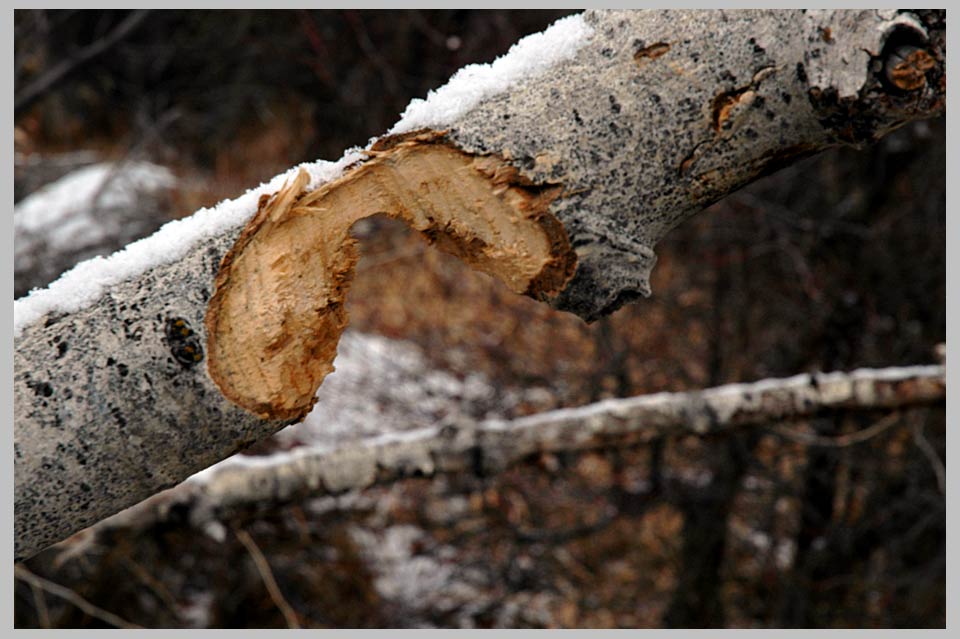
Cottonwood + Beaver, a primary ecological unity . . .
—On the road in the Northwest of America.

Cottonwood + Beaver, a primary ecological unity . . .
—On the road in the Northwest of America.
Beavers & the ecology of nations . . .
After a mere one hundred years of white exploration and
settlement in the Columbia River Basin, by 1900, beavers
were nearly extinct.
It is a telling story of the intersection of the ecology of hats
and the ecology of young nation states competing aggressively
for new territory. Until 1825, when in Paris the silk hat became
the latest fashion rage, beavers where trapped for their furs
wherever they could still be found in North America. The Pacific
Northwest joint-use agreement between Great Britain and the
United States of 1818 led the Hudson Bay Company to assume
that, after a period of ten years and the treaty was set to expire,
the border would be drawn at the Columbia River. They therefore
set out to achieve a competitive advantage in the fur trade by
systematically exterminating beavers found to the South and the
East of the river, thereby depriving the Americans of an important
resource. A remarkable fact, hard to believe today, but the botanist
David Douglas already complained of the scarcity of beavers in
the Willamette Valley as early as 1828.
The next wave of destruction arrived in the 20th century with the
massive hydroelectric water projects. (There are 38 major dams
in the whole of the Columbia River watersheds.) It was especially
the damming of smaller tributaries the caused new habitat loss,
making for artificial bodies of static water where once smaller rivers
flowed.
Beavers are, however, happily making something of a comeback.
I always think it is beautiful to see how they shape the landscape
at a scale that seems fitting and appropriate in many beneficial
ways, creating small pools for fish spawning, filtering and cleaning
the water, and in other ways regulating the flow of nutrients. The
story of the beaver is in many ways the story of the interconnectedness
of both the natural and cultural worlds. Who ever thought that
Beethoven's fur hat would impact not just beavers but also the
salmon of the great Columbia River Basin? And who ever thought
that such a humble, relatively small river animal one rarely has an
opportunity to observe in the Northwest might show us better, more
ingenious ways to live with the natural flow of the Earth's waters.
NEW:
To view / purchase
different sized prints of this image at the
PhotoWeek Store click here.
view as SLIDESHOW
|
[http://www.shutterfly.com/pro/cliffcards/photoweek]
| back to Picture/Poems:
Central
Display |
go to P/P Photoweek: Archive
|| or go to last week's PhotoWeek pages |
|
Map
|
TOC:
I-IV |
TOC:
V-VIII |
Image
Index
|
Index
| Text
Only
| Download
Page |
Newsletter
|
About
P/P |
About
Cliff
Crego |
Photograph by Cliff Crego © 2007 picture-poems.com
(created: XII.30.2007)